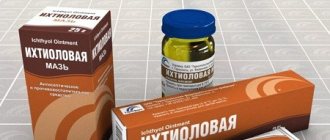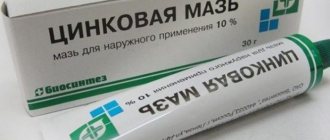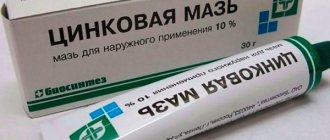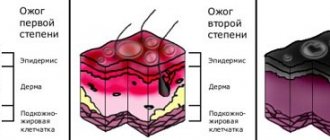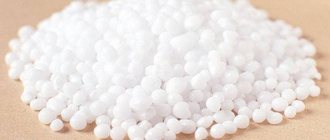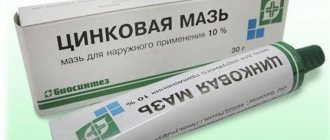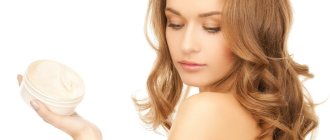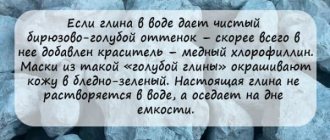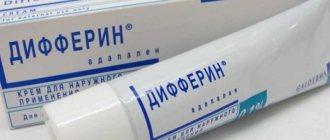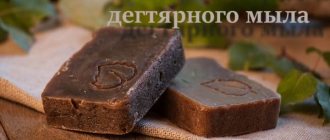What is zinc ointment
This is a time-tested, inexpensive medicine for eliminating skin inflammation. Has an antiseptic, astringent and drying effect. The main active component of the ointment is zinc oxide. Available in the form of a viscous, homogeneous white or grayish substance. Packaged in glass or plastic bottles or metal tubes of 25 g.
The base of the ointment is white paraffin or petroleum jelly. Based on the zinc content, the dosages of the drug are 5, 10 and 20%. Variants of the drug with salicylic acid or sulfur are also produced, which have a similar effect.
What does zinc ointment treat?
Zinc has a pronounced anti-inflammatory effect, and in combination with petroleum jelly acts as a protector, forming a protective softening film on the skin. This allows the drug to be used for various injuries of the integument:
- diaper dermatitis;
- insect bites;
- mechanical injuries;
- abrasions, abrasions;
- bedsores;
- dermatitis, eczema;
- chickenpox rash, urticaria;
- other lesions, including infectious ones.
Due to its properties to disinfect, soften and whiten the skin, zinc ointment is popular as a cosmetic product. Its use helps smooth out fine wrinkles, even out facial tone, prevent inflammatory formations and other imperfections.
The drug loosens the stratum corneum of the epidermis, activates the process of regeneration and cell renewal, stimulates microcirculation, and prevents tissue damage from free radicals. As a result of regular use, the severity of facial folds decreases, pores narrow, microcracks, pigment spots and freckles disappear, and emerging pimples do not leave noticeable marks.
Composition of the product and main properties
The ointment, in addition to the specified zinc oxide, contains medical petroleum jelly. This substance performs auxiliary functions, facilitating the application of the active ingredient. In addition, Vaseline is able to form a thin protective layer on the skin and accelerate the regeneration of damaged tissue .
Zinc ointment has the following properties:
- antiseptic;
- emollient;
- astringent;
- anti-inflammatory;
- drying;
- restorative.
How to use zinc ointment correctly
The drug must be applied to cleansed skin. It is recommended to pre-treat damaged epidermis with an antiseptic: for example, Miramistin. The required amount of product must be carefully distributed over the affected areas. The procedure should be repeated 1-3 times a day, depending on the problem.
It is not advisable to cover the skin with film, patches or bandages after applying the medicine, so as not to create a greenhouse effect. When using other external medications simultaneously, it is necessary to discuss their compatibility with your doctor.
Healing ointments for open wounds
Ointments for rapid wound healing are a fairly large group of diverse drugs with many active ingredients. Therefore, each ointment has its own special application profile, where it shows maximum effectiveness. Therefore, choosing the right remedy can be quite difficult.
All products intended for wound healing are special topical preparations, the main purpose of which is to accelerate the natural regeneration of damaged tissues and skin, as well as to enhance collagen production.
Wound healing agents for open wounds must meet the following requirements:
- The non-toxicity of the drug, which in most cases is ensured by the naturalness of the ingredients included in the composition. As a rule, if the ointment is based on components obtained by chemical means, then the level of its toxicity in most cases is high.
- The effectiveness of the product, confirmed not only by various studies, but also by reviews of real patients who used it.
- Absence of allergic manifestations during use of the product or their low frequency.
- Possibility of using the drug at any stage of wound healing without loss of effectiveness . For this reason, a good product should be sold in two forms at once, in the form of a gel and an ointment. At the initial stages (immediately after receiving a wound), you should use the gel form of the drug (jelly); you should switch to using the ointment only when the resulting wound has already dried out.
Baneocin
This healing ointment for open wounds contains two active antibiotics with a pronounced bactericidal effect: bacitracin and neomycin.
Bacitracin in Baneocin is a special polypeptide antibiotic, the bactericidal effect of which is manifested in the destruction of cell walls and the suppression of their synthesis.
However, neomycin is a different type of antibiotic belonging to the aminoglycoside group, the purpose of which is to suppress the production of protein inside bacteria, thereby providing an effective bactericidal effect.
If the action of bacitracin is directed mainly against harmful microorganisms of the gram-positive category, then neomycin is able to destroy both gram-positive and gram-negative elements, which together provides maximum effectiveness against bacteria and other microorganisms, except viruses and fungi.
Baneocin should be applied to existing areas of damage at least 2 times a day. Up to 4 applications per day are allowed if necessary. But here it is very important not to exceed the maximum permitted dose of the drug, equal to 1 gram per day.
Levomekol
Fast healing ointment for open wounds Levomekol is intended mainly for healing inflamed as well as non-sterile wounds with purulent formations. The product is able to penetrate even deep into wounds to the source of inflammation and effectively eliminate it, which can significantly speed up recovery.
Levomekol has a pronounced antibacterial, anti-inflammatory, and regenerating effect, due to which it can be classified as a group of combined effect agents.
The ointment contains chloramphenicol, which is able to fight even the most resistant to destruction microorganisms of the gram-negative category, including staphylococci, as well as Escherichia coli and Pseudomonas aeruginosa.
If you use the product too often, bacteria can develop resistance to its components, but this process occurs extremely slowly, and therefore the effectiveness of therapy does not decrease.
Another component is methyluracil, which can quickly and very easily penetrate the upper tissues, enhancing and accelerating the regeneration of damaged tissues and activating the growth of new cells. The use of ointment can quickly eliminate swelling, relieve inflammation and significantly alleviate the patient’s condition.
The product should be used only externally, applying it to the surface of the wound after cleansing it. To treat open wounds, the ointment can be applied in the form of compresses using sterile gauze pads, and it is important to change the dressings at least twice a day.
Vishnevsky ointment
For many decades, this ointment has been considered one of the best healing ointments for treating open wounds, as well as being simple and natural. The popularity of Vishnevsky ointment is mainly explained by the versatility of its use, as well as the fact that applying this product to burns allows you to cure them and restore damaged tissue literally within a few days.
Vishnevsky ointment can be applied to open wounds only if a purulent process has begun in it, since due to the uniqueness of its action, the product promotes rapid cleansing of the wound, cessation of the infectious-inflammatory process and healing.
The essence of the ointment is that when it gets on the surface of the wound, it causes a very strong inflammatory process and active suppuration, which promotes the rapid separation of formations and cleansing of the wound, after which it heals.
In general, the ointment helps prevent the occurrence and development of infection, accelerates natural regeneration processes, and allows you to restore damaged tissue without the formation of serious scars.
Apply this ointment to wounds or burns after treatment, as a compress, using sterile gauze napkins, with 4 layers of gauze applied to the entire wound area and a thick layer of ointment is applied to it, covering it with a second napkin, and applying compression paper on top and a fixing bandage. The dressings should be changed every 12 hours, while treating the surface of the wound and the skin around it with antiseptic preparations.
Zinc ointment
This product is distinguished by its versatility of use and high efficiency in the treatment of various skin lesions.
Zinc ointment perfectly disinfects surfaces, eliminates inflammation, and has a pronounced drying effect.
An important point is that one of the effects of zinc is aimed at the functioning of the sebaceous glands, or more precisely, their production of sebum. Zinc reduces fat synthesis, which has a beneficial effect on the overall elasticity of the skin and wound.
Zinc ointment can be called the most inexpensive and very effective means for healing almost any wounds, since it is the lack of zinc in the tissues that leads to the slow recovery of injuries, including the simplest ones, such as scratches or small cuts.
The drug creates a thin film on the surface of the skin and damaged tissues that protects against various infections.
The ointment should be applied to wounds several times a day under a bandage or openly, depending on the severity of the damage and its depth.
Eplan
The product is highly effective against various infections and at the same time has a very wide range of applications, which allows us to call this ointment universal.
An important feature of the ointment is that its use not only promotes faster healing of the resulting wound, but also provides a pronounced analgesic effect.
You will be interested...
Characteristics of types of wound healing Thanks to this feature, this ointment becomes an excellent remedy for various bruises, since its application quickly eliminates pain and swelling, and also promotes healing.
Eplan can be used for wounds and abrasions at any stage of healing , but in addition, it is excellent in treating frostbite and burns, regardless of their degree. Using this remedy, you can also treat eczema, including microbial etiology, manifestations of herpes, bedsores, condylomas and other skin diseases.
An important point is that the product is capable of destroying various types of harmful microorganisms, including fungi. You need to apply the ointment to the wounds 2 – 3 times a day.
Solcoseryl
It is this ointment that most doctors prescribe for the rapid healing of various wounds and abrasions. The product is presented in two types, of which the ointment is applied after the fresh wound has dried and began to crust over, since its fatty base in this case forms a special protective film on the surface.
On fresh open wounds, it is recommended to apply the drug in the form of a gel, which does not have a fatty base and better penetrates into the deeper layers of the skin and damaged tissues.
The application of Solcoseryl, thanks to its active substance, stimulates the production of natural collagen in cells, which makes it possible to grow new tissue fibers much faster and repair damage.
In addition to wounds, this drug can be used to successfully and quickly treat burns of varying degrees, bedsores, frostbite, trophic-type ulcers, as well as all kinds of cuts, scratches and abrasions. It must be applied at least 2-3 times a day under a bandage or openly.
When applying a compress, you should use sterile gauze pads soaked in gel or ointment and secured to the wound with a bandage or plaster. When changing dressings, it is recommended to treat the surface with antiseptic solutions or hydrogen peroxide.
Actovegin
This ointment can be called an analogue of Solcoseryl, since the active substance in these products is the same, obtained from the blood of young calves, and in other respects the composition of the products is largely similar. This drug is also produced in the forms of gel and ointment.
The gel is used to treat and heal fresh wounds and injuries, and the ointment should be applied after the first signs of healing of the injury appear.
Indications for the use of this drug also coincide with Solcoseryl, but the drug can also have a different effect, in particular, the ointment can be used in the presence of venous insufficiency to prevent blood stagnation as a prophylactic agent.
It is important to remember that pregnant and breastfeeding women should not use this drug to treat wounds and abrasions..
The gel, like the ointment, is applied to the wound once a day; for extensive damage, the dressing should be changed every 12 hours. The product can be applied using sterile gauze wipes, securing them with a bandage or adhesive tape, as well as openly.
Sulfargin
The main component of this ointment is silver sulfadeazine, due to which the product has a pronounced bactericidal and healing effect.
Indications for the use of Sulfargin include:
- Skin burns, in the treatment of which the product is used to prevent infection through the resulting injury.
- Treatment of burns , as well as various wounds characterized by weak exudation, at the initial stage of healing, as well as at subsequent stages of restoration of damaged tissue.
- Treatment of wounds that are characterized by a long course and do not heal, for example, after surgery or amputation of a limb.
- Treatment of ulcers of the trophic category, bedsores and other damage to the skin.
An important point is that the product has some contraindications.
In particular, it should not be used to treat women expecting or already nursing a baby, as well as children under 1 year of age. You cannot use the ointment if you have individual intolerance, as well as if there is a deficiency of glucose-6-phosphate dehydrogenase in the body.
Zinc ointment for the treatment of children
The drug is approved for use from 0 years. For diaper rash, diaper dermatitis and other skin problems, the ointment should be applied with light movements, treating all affected areas. The procedure is repeated after each diaper change and water procedures until redness and irritation disappear.
For older children, burns, abrasions, chickenpox blisters or mosquito bites are treated with zinc ointment, applying the product exactly to the affected area as needed. It is not advisable to use the medicine for more than 7 days in a row, so as not to dry out the skin.
Indications for use
The listed properties of the drug determine its effectiveness in dermatology for solving the following problems:
- superficial damage to the epidermis and dermis (abrasions, burns with boiling water, chemicals, etc., wounds, irritations of various nature);
- diaper rash;
- eczema on the legs, etc.;
- herpes (simple);
- trophic ulcers;
- prickly heat;
- streptoderma in adults and children;
- bedsores (on the buttocks and other parts of the body);
- baby diaper dermatitis.
Let's consider the use of ointment in more detail for each disease.
How to use zinc ointment for the face
For juvenile acne, it is recommended to apply the drug to the inflammatory elements. You should first remove makeup from your face and wash your face. For acne, salicylic-zinc or sulfur-zinc ointment has a more effective effect, this should be taken into account with frequent severe skin rashes. When treating acne, it is useful to enrich your diet with foods containing zinc and copper: legumes, nuts, beef liver, chicken eggs.
With the initial signs of aging, the ointment can be used as a care product: as a softening, whitening and smoothing mask:
- Apply as a cream, a thin layer to cleansed facial skin;
- the medicine cannot be used under a foundation;
- The application procedure should be repeated 1–3 times a week; more frequent use of the ointment may result in drying out;
- when used as a mask, wash off the remaining ointment from the face after 20–30 minutes, then apply a nourishing or moisturizing cream;
- Avoid applying zinc ointment to the thin skin around the eyes.
If necessary, it is allowed to mix the drug with other cosmetics: aloe juice, sea buckthorn or almond oil.
After applying zinc ointment, you should appear less often in the open sun. Ultraviolet light enhances the drying effect of the drug, which can harm turgor.
